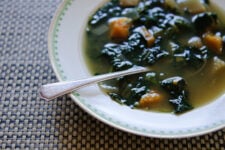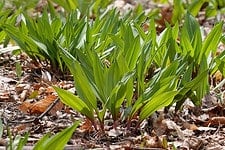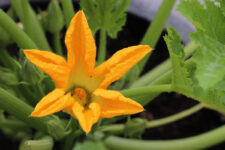Spring foraging is the perfect way to get back to nature after a long winter indoors. It’s also a great way to supplement your harvest as you wait for your garden to start producing again. No matter your reason for foraging, you’ll be amazed at how wild edible plants can improve your culinary game.
Below we’ll look at some of the most common edible “weeds” that you might find in your yard this spring. We’ll give you tips for locating and identifying each and tell you how you can best put them to use in the kitchen.
Important Tips Before You Forage
The most important rule for foraging is never eat anything you haven’t 100% identified. There are a lot of lookalike plants out there and some of them are toxic. If in doubt, leave the plant alone!
Here are a few more tips to make the most of your foraging experience while staying safe:
- Avoid contaminants. Never forage where pesticides and herbicides are likely to have been used. Try to get far away from civilization, including popular trails. Alternatively, you can forage in your own yard, assuming you don’t use toxic lawn and garden products.
- Understand toxicity. Know which plants and plant parts can only be eaten in moderation or after heating.
- Know where to go. Never forage on private land unless you have permission. And make sure public land foraging is legal in your region.
- Take only what you need. In respect to nature and your fellow forager, only take as much as you need. When possible, keep roots intact and only forage a few leaves from each plant so they can continue growing.
- Leave no trace. Always follow the leave-no-trace philosophy. Clean up your trash, don’t do any damage to the ecosystem, and forage ethically.
- Know what you’re doing. If you haven’t learned to correctly identify plants on your own, bring a knowledgeable foraging partner with you and let them teach you.
Common Edible Weeds
These edible plants are common throughout the US and are readily available for foraging in the spring months.
1. Dandelion (Taraxacum officinale)
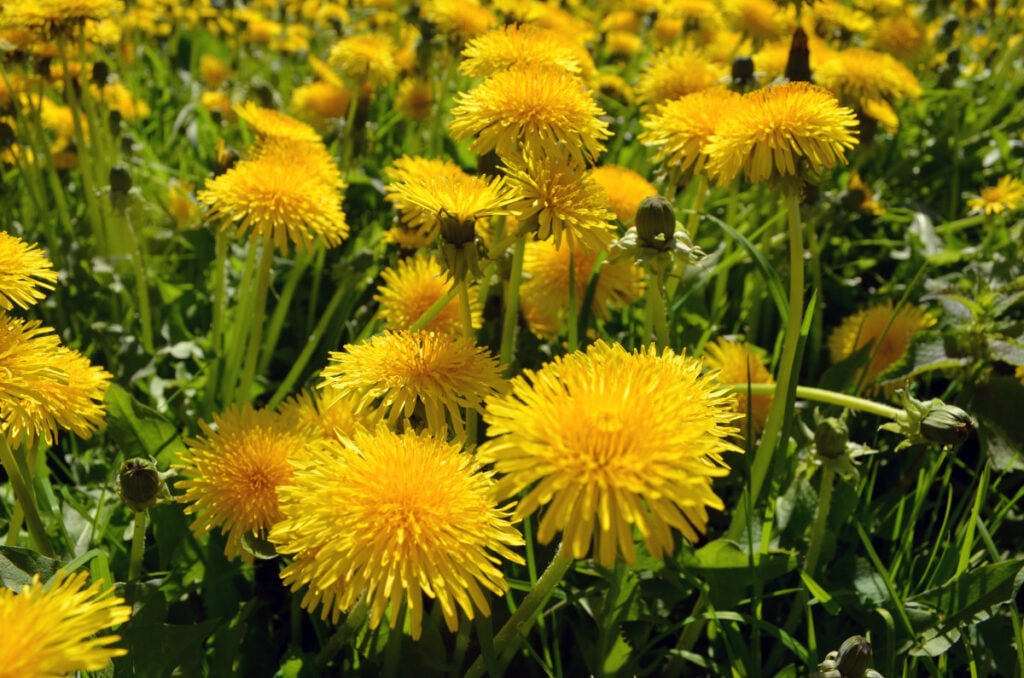
For novice foragers, there’s no easier wildflower to find than the common dandelion.
Generally considered a weed, these peppy, puffy yellow flowers grow throughout the States in yards, fields, along creek edges, and on trails.
When it comes to foraging dandelions to eat, the challenge isn’t finding the plants, but finding plants that haven’t been treated with toxic chemicals. I recommend foraging for dandelions in your own yard or far from trails, roads, and other areas that are likely to be treated for weeds.
Dandelions don’t typically bloom until April, but you can harvest their leaves as soon as the weather begins to warm up. The leaves have a bitter, spicy flavor, similar to arugula.
They can be used raw in salads, like in this Dandelion Salad with Ramps, Bacon, and Blue Cheese, or blanched to remove the bitter notes. They can also be sauteed similar to spinach.
If you’re lucky enough to find a cache of early-season dandelion flower heads, try these Gluten Free Dandelion Pancakes or learn how to make Dandelion Jelly.
2. Chickweed (Stellaria media)
Chickweed is another plant that can be commonly found wherever humans are present. It tends to sprout up when the ground is disturbed, including in gardens, on farmland, and around building sites. It’s one of the first edible plants to pop up in spring, making it a wonderful choice for early-season foraging.
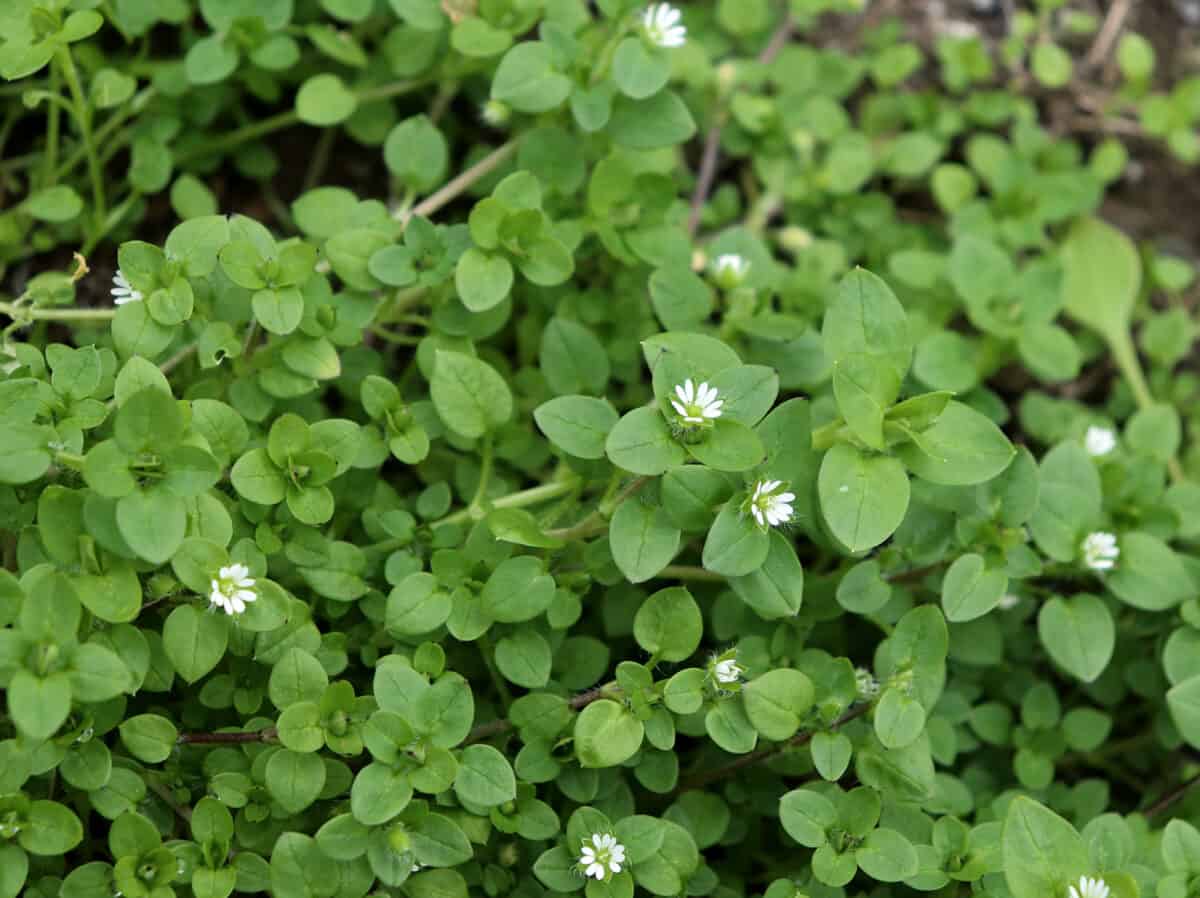
The plant is easily identifiable by its small, bright green leaves and tiny white flowers with five pairs of petals.
All parts of the plant are edible, but for propagation’s sake, I recommend harvesting only the leaves and flowers using a pair of scissors. The leaves have a delicate taste similar to iceberg lettuce and a nice crunch. The flowers make for a beautiful garnish.
Chickweed leaves are typically used raw in salads. They can also be sauteed, which gives them an earthy flavor similar to cooked spinach.
Eating chickweed is generally considered safe. However, the plant does contain a small amount of saponins. For this reason, most herbalists advise pregnant and breastfeeding people to avoid this plant.
3. Garlic Mustard (Alliaria petiolata)
Garlic mustard is one of the oldest spices used in Europe, where it grows naturally. In America, this plant has become an invasive species and can be found throughout the country.
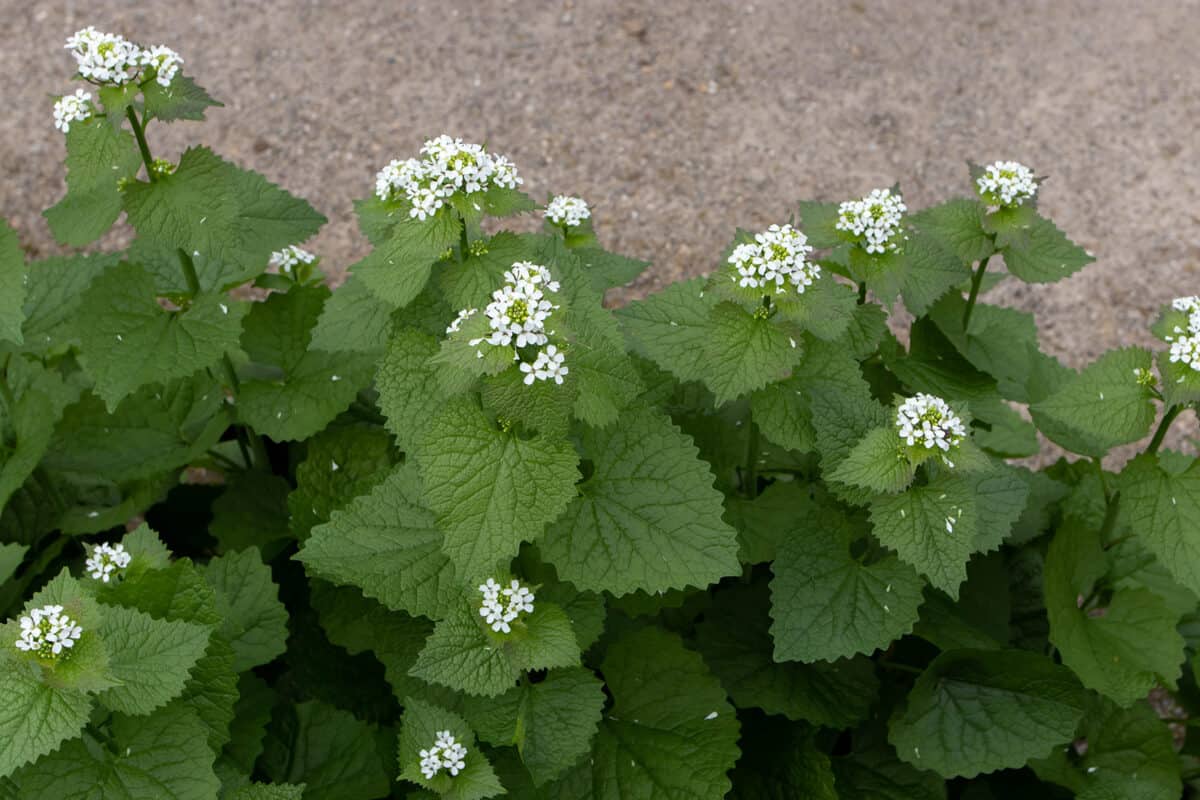
The leaves of this edible mustard species look more like mint leaves than common mustard. The flowers feature the standard four petals of mustard but are white, not yellow. The leaves give off a potent garlic smell when rubbed.
It’s these garlicky leaves that are most commonly used in cooking. When picked young, their flavor is somewhere between garlic cloves and mustard seed.
Raw leaves can be chopped and added to savory salads or blended along with basil into pestos.
4. Ramps (Allium tricoccum)
Ramps, also known as wild leeks or wild garlic, have long been celebrated for their connection to the spring season. In Appalachia, where they grow prolifically, they are believed to ward away common winter illnesses and are often harvested in bulk. Given their dense nutritional profile and the fact that they’re one of the few sources of greens in the region this time of year, their connection to better health is likely well-earned.
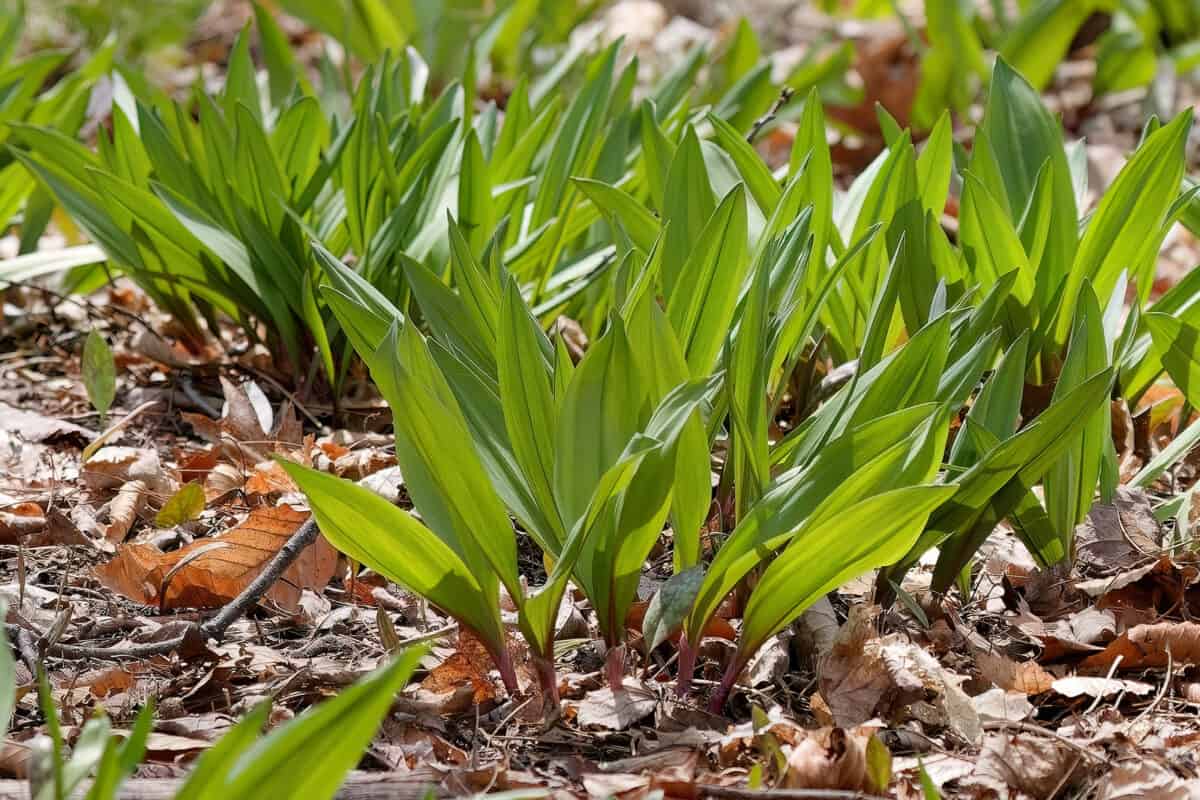
These alliums are native to moist deciduous forests. In the US, they grow predominantly in the east.
Ramps have easily identifiable elongated, glossy leaves with red pigment on the stem near the bulb. The white flowers look very similar to those of other allium species. You can tell the difference between ramps and toxic lily of the valley by cutting the leaves and sniffing for that telltale garlic scent.
The leaves have a sweet garlic-onion flavor and are often sauteed with eggs or potatoes. They can also be pickled, breaded and fried, or used in soups.
When foraging for ramps, pick only one or two inner leaves from each bulb. This will ensure the plant stays healthy enough to keep growing.
5. Fiddleheads (Matteuccia struthiopteris)
Matteuccia struthiopteris, the most common fiddlehead fern foraged in the US, grows predominantly in the forests and gardens of the northeast. They’re known by the common name, “ostrich fern.”
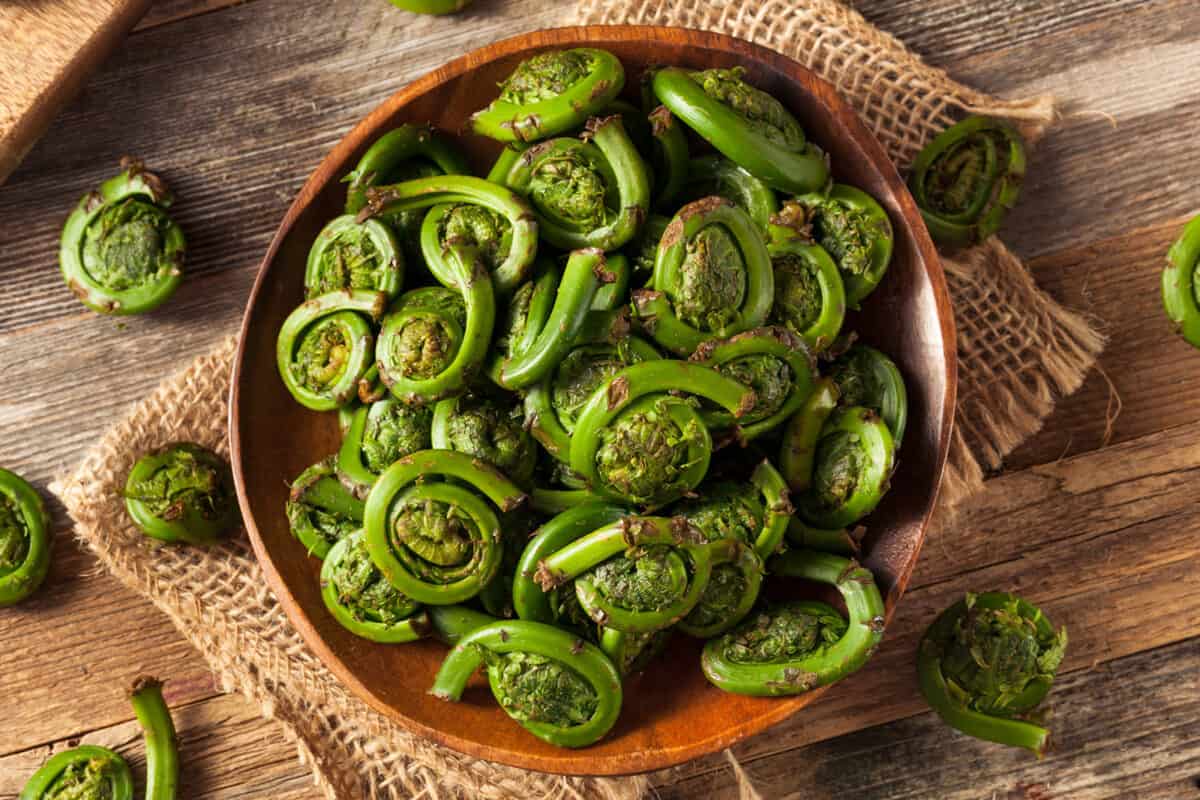
The young fronds are harvested when still tightly wound and used as a vegetable in the kitchen. During the early days of spring, these immature fronds are plentiful. Make sure to only harvest fronds from plants with at least four fiddleheads, leaving half of the fiddleheads intact so the plant can continue to grow.
Do note that ostrich fiddleheads look very similar to many other species of fern, not all of which are edible. Make sure you identify the plant before harvesting.
Raw fiddleheads are known to cause foodborne illness and therefore must be steamed or boiled before consuming. Start by washing the fronds thoroughly in cold water, removing all the brown scales. Then steam for 10 minutes or boil for at least 15 minutes (1).
Once prepared, fiddleheads can be fried, sauteed, or roasted. They can also be added to soups or chilled and used to top salads. The simplest way to enjoy this wild delicacy is to mix it with melted butter and a little lemon juice.
6. Purslane (Portulaca oleracea)
Purslane is a common garden weed with unparalleled nutritional potential. It’s an excellent source of vitamins E and C, packed with many minerals, and a rich source of alpha-linolenic acid.
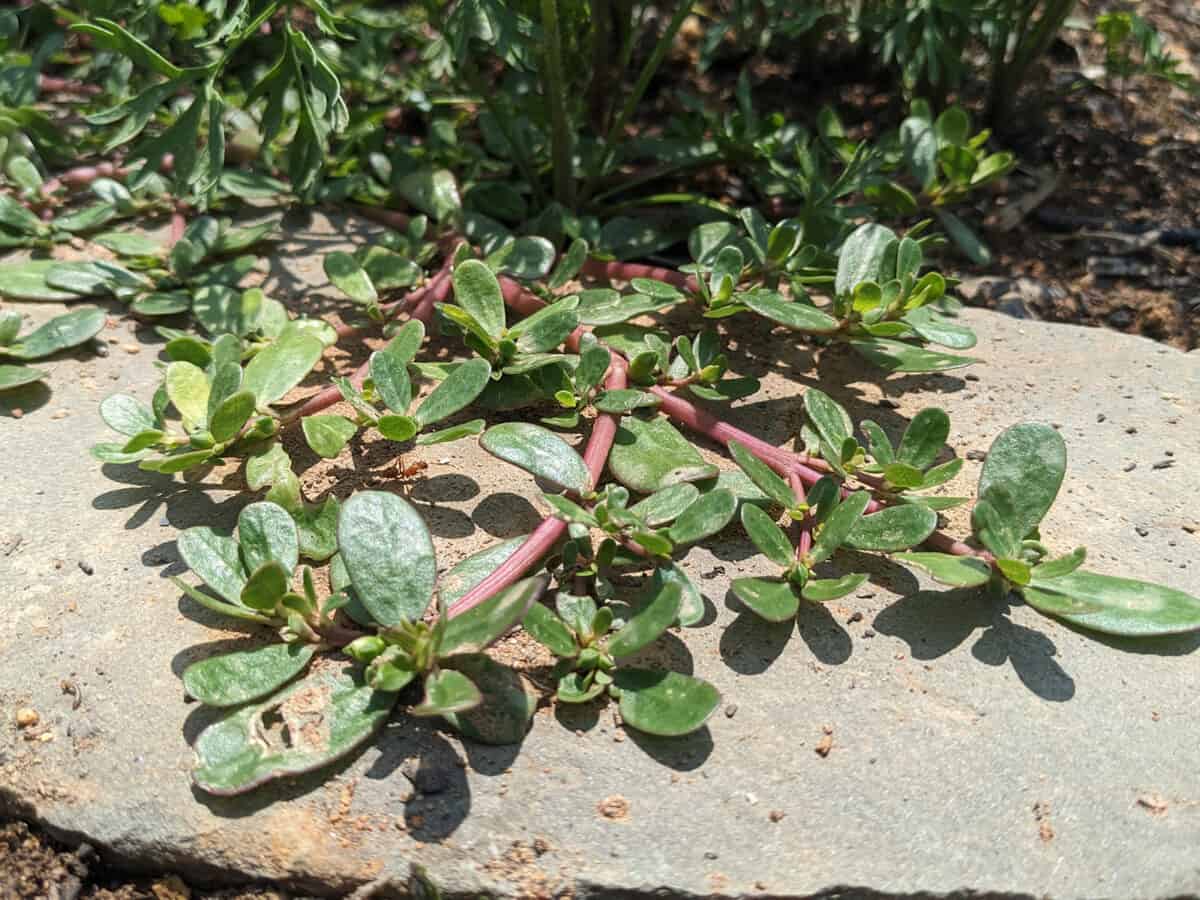
This hardy weed can grow just about anywhere. It can be found in all of the lower 48 states and Hawaii. It’s common on trails, along borders in the garden, and in sidewalk cracks.
The stems have a reddish hue and the leaves are thick and smooth. The tiny yellow flowers have five notched petals. This common weed does have a few lookalikes, so be sure to identify it carefully.
Purslane grows most abundantly in the hot summer months, but young plants can be harvested as early as late spring. As long as the long taproot is kept intact, the plant will keep growing for repeat harvests throughout the summer.
The leaves of purslane have a fresh, slightly sour flavor. They make a wonderful addition to salads, such as this Black Barley, Purslane, and Watermelon Salad, but can also be cooked and added to soups and stir-fries or pickled. All parts of the plant are edible and the tiny flowers make an adorable garnish.
7. Plantain (Plantago spp.)
Another weed you’re likely to find thriving in your garden is the plantain. With broad leaves and a distinct, spike-like flower cluster, this plantain looks nothing like the tropical banana cousin that shares its name.
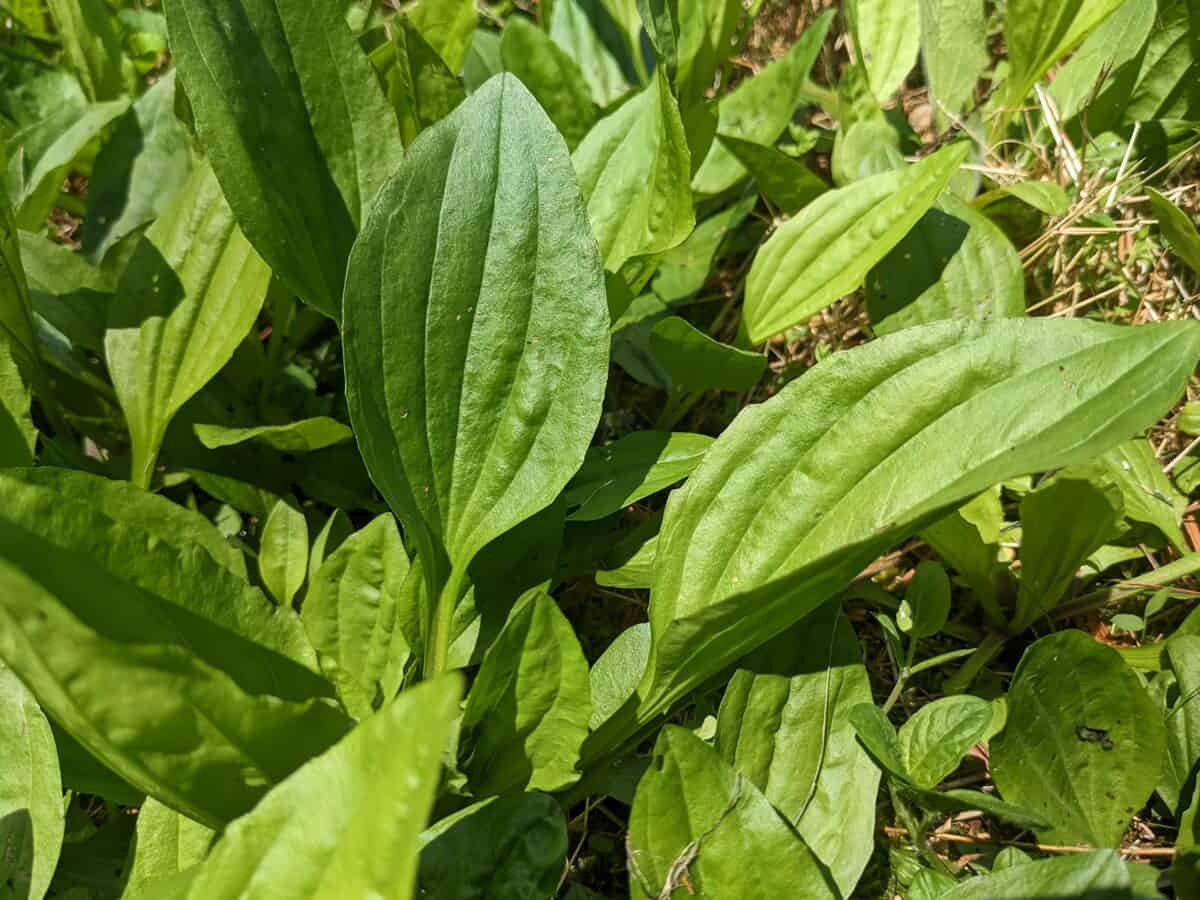
These hardy weeds love to grow in disturbed soil and do exceptionally well in areas of compact earth, such as along the footpaths in your garden.
Every part of the plantain is edible, but the leaves are most commonly used in home cuisine. These are best when picked young and tender in early spring. They have a slightly bitter flavor and add depth to salads.
More mature leaves are quite fibrous and taste best when cooked and used as you would cabbage or kale. The seeds are also quite useful, though somewhat tedious to gather. They can be ground into flour or used as a vegan egg substitute similar to ground flaxseeds.
8. Stinging Nettle (Urtica dioica)
Stinging nettles can be found in every state except Hawaii. With a very similar look to mint, this square-stemmed, serrated-leaf plant is easily identified by its irritating sting. When touched with bare skin, special stinging “hairs” full of various compounds break off in the skin and cause a painful sting.
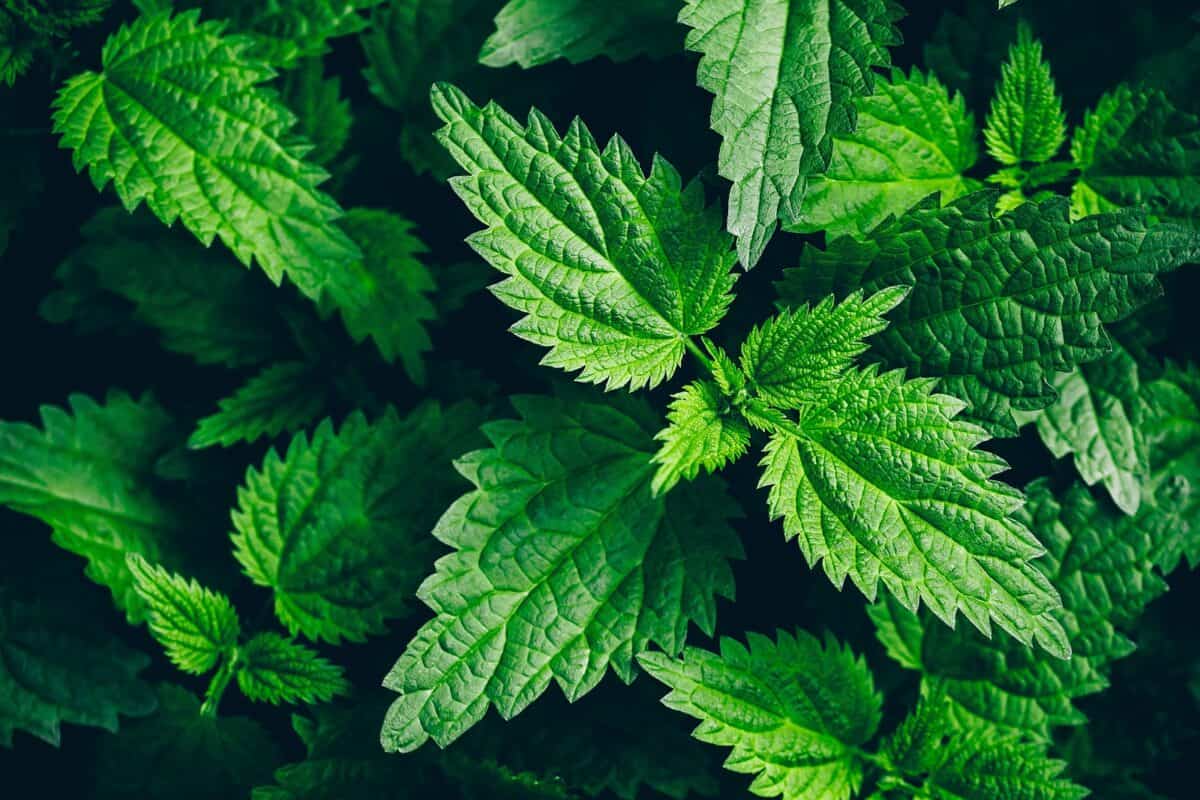
Despite their irritating personality, these weeds make a wonderfully versatile and nutritious ingredient in the kitchen. Steaming, boiling, and sautéing them effectively neutralizes the sting, making them safe to eat.
The cooked leaves have a slightly sweet, spinach-like flavor and can be used in any dish this common green is used in. They can also be baked or dehydrated to create nettle chips.
The tender top leaves on the stem are the best for harvesting. Make sure to wear gloves when picking them and put on tall boots and long clothing before rummaging through any nettle patches.
9. Henbit (Lamium amplexicaule)
Henbit has a very similar look to purple dead nettle and tends to pop up around the same time in the spring. However, it’s easy to tell this plant apart by its fused leaves which grow in circles around the stem. The flowers also tend to be a lighter purple and have a more erect growth habit.
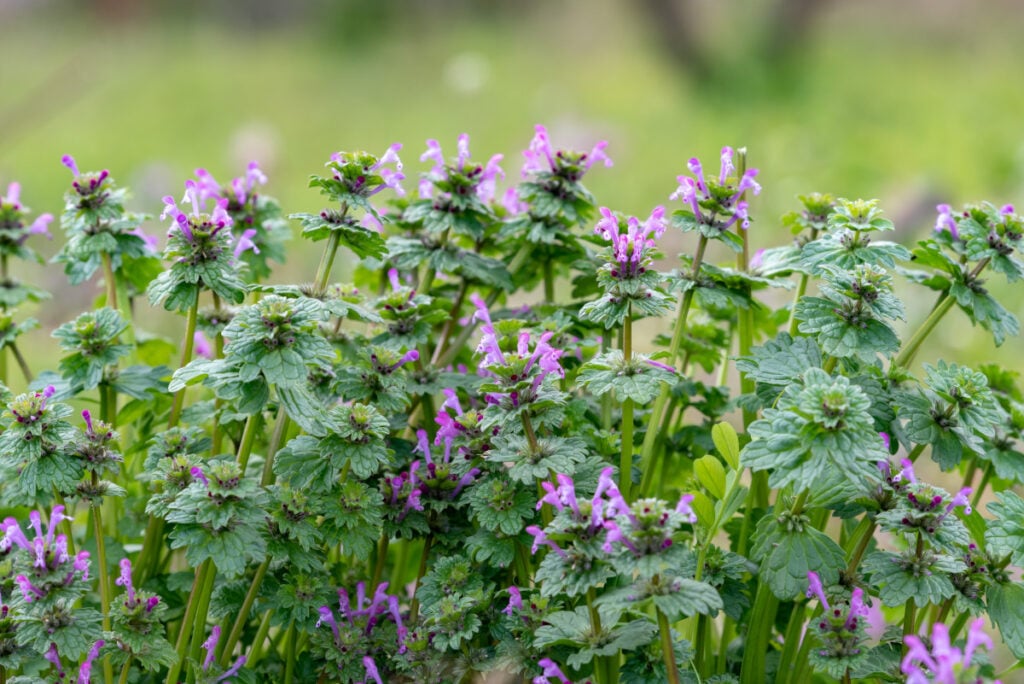
Native to the Mediterranean, this weed now grows readily throughout the world and is common in the Eastern US. It can be found growing along with native grasses and wildflowers in meadows and other open areas.
The leaves are most commonly used in cooking. They have a fresh, “greens” flavor, similar to baby kale with added herby notes somewhat like oregano. They are fantastic when used raw in salads, but can also be added as an herb to many savory cooked dishes.
10. Sheep Sorrel (Rumex acetosella)
Sheep sorrel is a common noxious weed that can be found early in the spring. It grows across North America in acidic soil. You’ll often find it growing alongside blueberries, as well as in recently disturbed soil around mining sites.
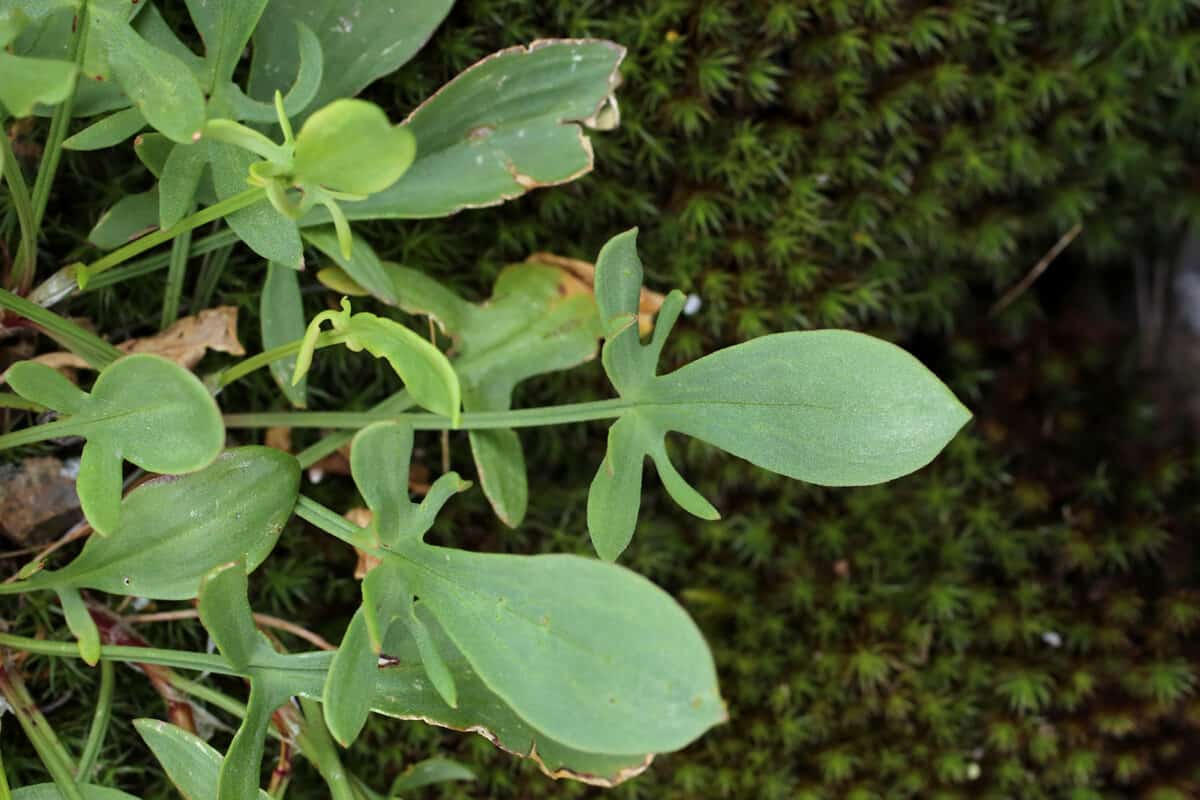
This sorrel species has sage-green, pointed leaves. The leaves have extended, pointy lobes at the bottom that make them look like little rocket ships. Female plants produce red-pink flowers while male plants produce yellow-green flowers.
The leaves of sheep sorrel have a tangy, lemony flavor, somewhat similar to rhubarb. They make a great addition to salads. Their unique shape also makes them a fun garnish.
Sheep sorrel contains oxalic acid, which gives it its strong flavor. While fine in small amounts, eating too much sorrel can be toxic. This is generally not an issue for humans but can cause problems for grazing livestock.
11. Curly Dock (Rumex crispus)
Curly dock, also known as yellow dock, is another edible you’ll want to forage in the spring. The young leaves have a nice sour taste, similar to sorrel. But as they mature, they become bitter and nearly inedible.
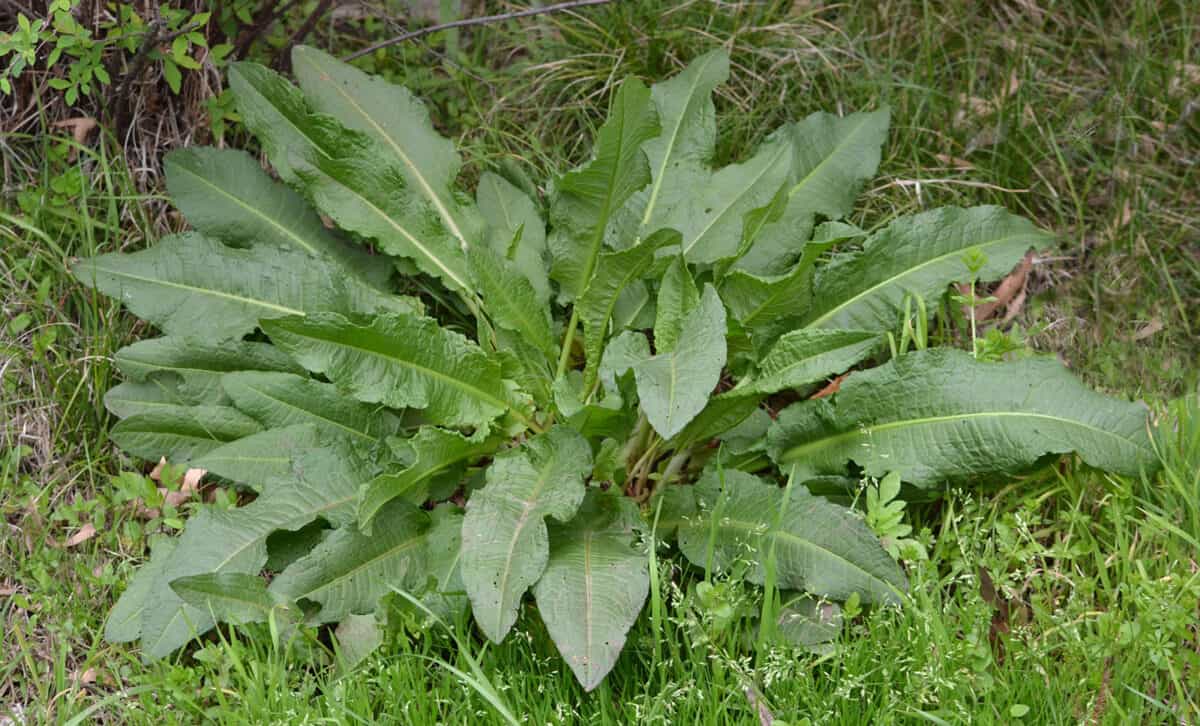
This noxious weed can be found throughout temperate zones of North America. It grows readily along roadsides, forest edges, and in disturbed soil.
The elongated, curled-edged leaves can be used in much the same way plantain leaves are used. When adding to soups and stir-fries as a vegetable, it’s best to boil them first in multiple changes of water. This will remove much of the toxic oxalic acid.
The boiled leaves make a great addition to our Spring Tonic Soup with Wild Greens.
The leaves can also be used raw in salad, but only in moderation. In summer, the mature seeds can be ground into flour. And the root, which is high in iron, has many medicinal uses.
12. Elderflowers (Sambucus)
In late spring, one of my favorite flowers to forage are elderflowers. Not only do these carry an intoxicating aroma and sweet honey flavor that add depth to many dishes, but their delicate look makes them a great garnish.
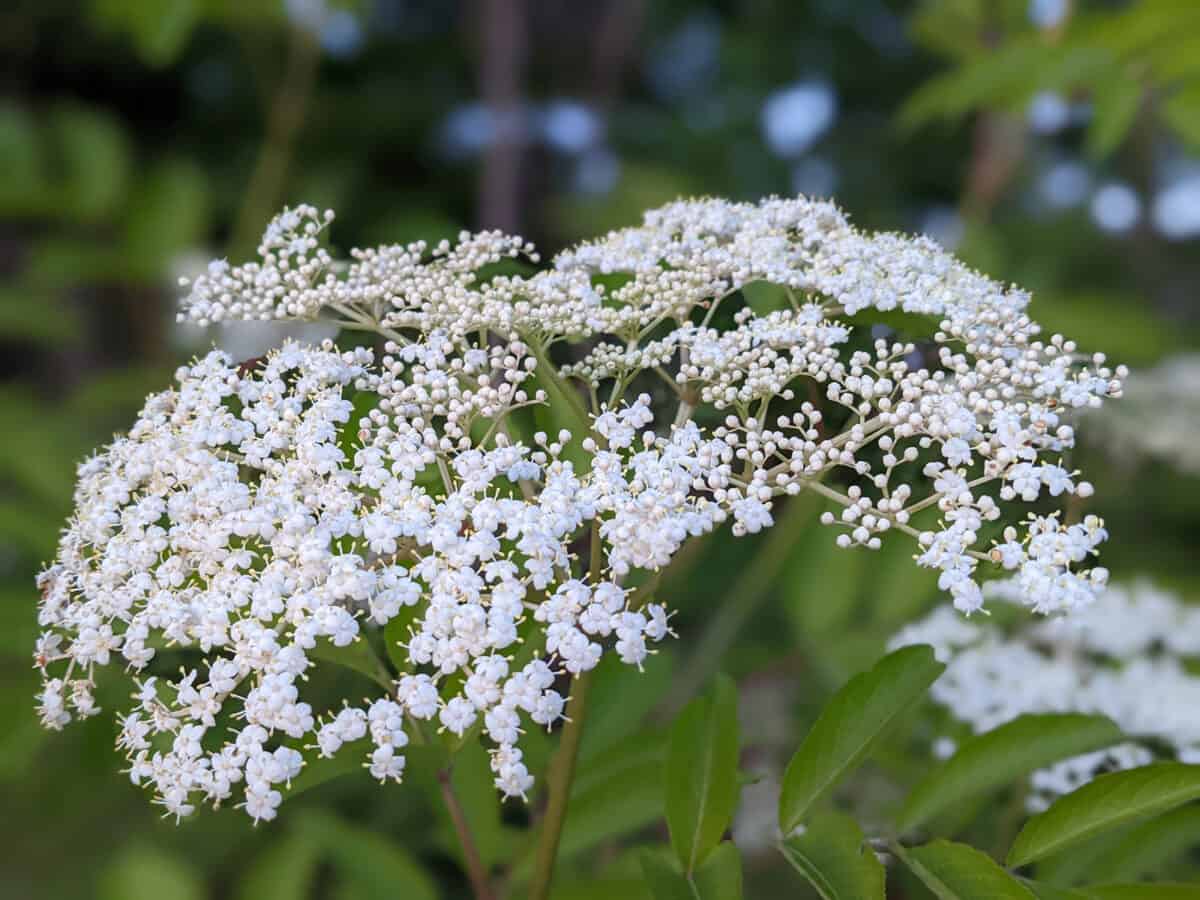
Elders require high-nitrogen soil to grow. For this reason, they’re often found growing around farms, homesteads, and other areas where fertilizers or organic waste deposits can be found.
The flowers have a sweet vanilla aroma. The flavor is fruity and fresh with notes of lychee and pear.
Elderflowers are commonly used to make syrups which can be incorporated into liqueurs, cakes, and custards. The flowers also make a wonderful garnish for the finished drink or dessert.
While fine in moderation, elder berries and flowers are mildly toxic, especially when raw.
13. Wood Sorrel (Oxalis spp.)
Wood sorrels encompass a long list of species, all of which are edible. However, the palatability of these plants varies from one species to the next and from season to season.
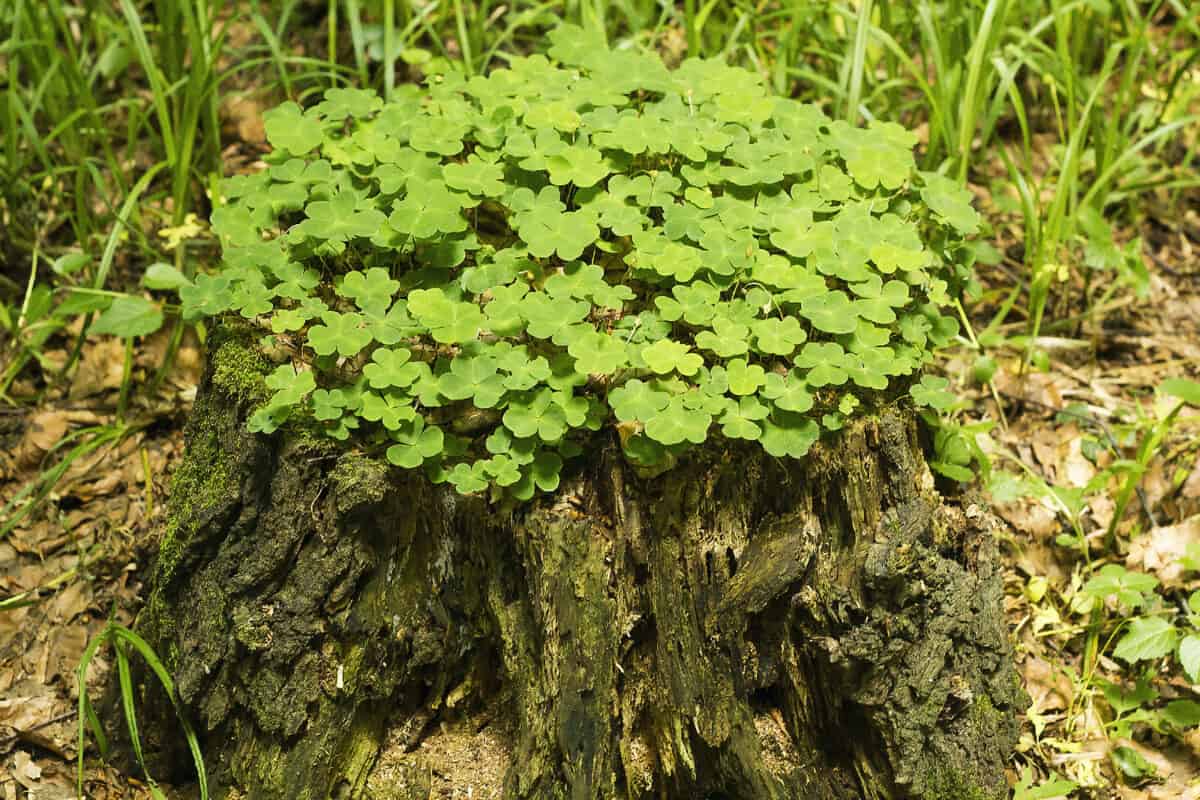
Wood sorrel has very delicate leaves with thin stems. The leaves grow in groups of three leaflets, each resembling a heart. They look very similar to the leaves of the clover plant, but the flowers, which are small with five petals, look nothing like clover flowers.
These flowers can be a variety of colors. Yellow wood sorrel has bright yellow flowers and is one of the tastiest varieties you’ll find this time of year.
The delicate leaves and flowers of this plant have a pleasant lemon flavor and make a great raw addition to salads. They can also be added to soups and rice dishes or used as a garnish. You can also make tea from wood sorrel, though moderation is advised due to the presence of oxalic acid.
14. Lamb’s Quarters (Chenopodium album)
Lamb’s quarters, also known as fat-hen, is a close relative of spinach and quinoa. This common backyard green used to be a staple food across Europe and Asia.
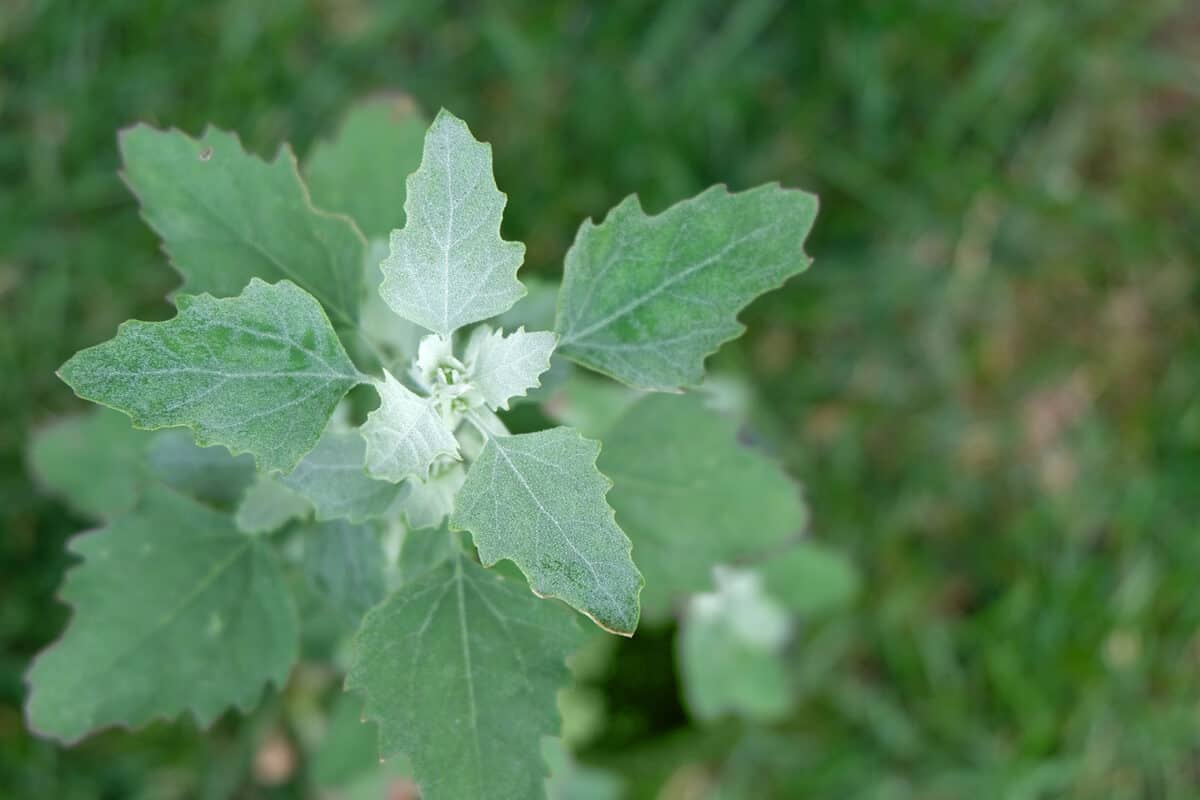
Today, this plant grows throughout the world, including much of North America. It’s a common sight in suburban yards, along roadways, and anywhere else soil has been disturbed.
The silvery-green leaves have an earthy to neutral flavor and can be used in place of spinach in both raw and cooked meals. The leaves are most tender as the plants begin to grow late in the spring. The seeds can be harvested at the end of the summer and used much like quinoa.
Lamb’s quarters is exceptionally high in vitamin C, vitamin A, and riboflavin. It also delivers many essential minerals.
15. Violets (Viola spp.)

Wild violets are typically the first wild edible to pop up in the spring. In some climates, you may even be able to find them in late winter.
Violets grow in shady, wooded areas that have rich soil. Flowers are typically purple, but can also be white, blue, and yellow. Plants with deep purple flowers are generally the best for eating.
These wild types are closely related to the violets sold in garden stores, which are also edible. Just make sure, if you’re going to forage at your local garden center, that you choose only organic plants.
Both the leaves and flowers of violets can be used in the kitchen. Making candied violets is one of my favorite springtime activities. The flowers can also be used to create beautiful and tasty homemade violet jelly.
Violet flowers and flower petals make a wonderful addition to salads, like this Spinach and Blood Orange Salad with Violets. The leaves can be eaten raw when young and tender. Mature leaves are very chewy, but take on the perfect cooked-spinach texture when steamed.

